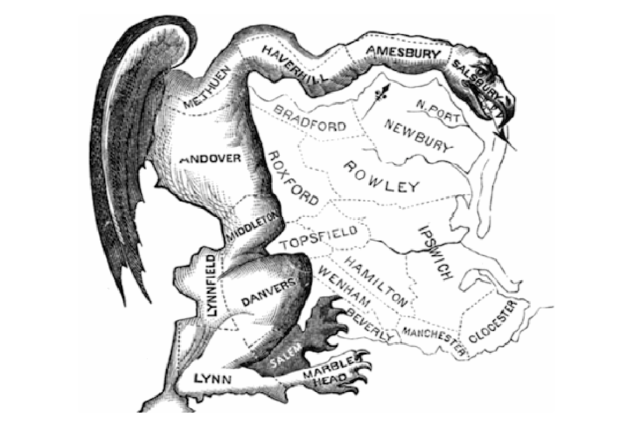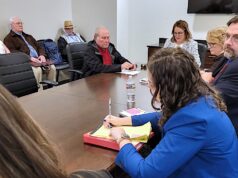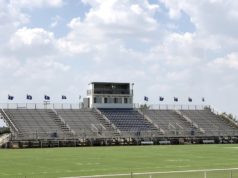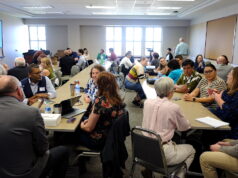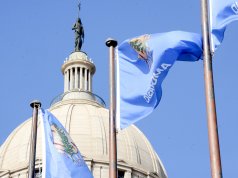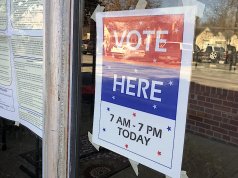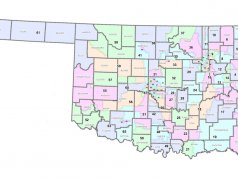I’ve recently returned home from the Oklahoma Academy’s 2017 Town Hall, and my adrenaline is still pumping. Although first founded in 1967, the nonpartisan and nonprofit think tank has refined a sophisticated and balanced “town hall” process for diagnosing Oklahoma’s key problems and collaboratively analyzing research-based, real-world solutions. This excellence stems from a bottom-up process that first listens to participants before reaching out to the nonprofits that serve disenfranchised people.
Town Hall participants pledge to study a comprehensive packet of documents presenting multiple sides of complex social and political challenges. To create an environment for honest reflection, participants agree to maintain the anonymity of specific statements from their fellow town hall partners (unless the individual cited grants permission).
This is an overview of the insights I gained during this year’s Town Hall, which ran Oct. 15-18 in Durant.
Partisan gerrymandering under the microscope
Keeping in mind that this first post is limited to what I took home from the event, it’s hard to deny that extreme gerrymandering has contributed mightily to Oklahoma’s legislative deadlock — as well as many of our nation’s worst political dilemmas. Democrats and Republicans alike have long histories of drawing district lines to gain partisan advantages. There is nothing new in politicians trying to select their voters as opposed to voters picking their representatives. Now, however, sophisticated digital technologies have put gerrymandering on steroids.
The U.S. Supreme Court has outlawed gerrymandering designed to discriminate based on race, but it has allowed the drawing of district lines to gain political advantage. Gerrymandering has become so extreme, however, that the Supreme Court in June agreed to hear a case challenging the Wisconsin legislative map.
‘Efficiency gap’ could be useful in Oklahoma
Justice Anthony Kennedy has balked at overruling extreme political gerrymanders because there has not been “‘a workable standard’ to decide when such tactics crossed a constitutional line.” But technology and advanced mathematical calculations now provide such a metric, known as the “efficiency gap,” and this is relevant to Oklahoma. Oklahoma Watch reports that, since our state’s Republican majority redrew districts six years ago, the size of their majority has grown by 10 percent. Oklahoma is one of 12 states with an efficiency gap that crosses what “… some legal experts and academics argue should be the legal threshold for evidence of gerrymandering,” according to Oklahoma Watch.
The best options for improving Oklahoma’s electoral system and addressing our state’s gridlock would start with a nonpartisan redistricting system.
Suggestions for improving voting access
Technology also provides other methods for persuading Oklahomans to exercise their voting rights (and responsibilities). My take is that David Glover of BadVoter.org is correct, and the key tool for increasing voter participation would be automatic voter registration: As citizens sign up for a driver’s license, they would be registered to vote unless they opt out (as opposed to opting in to register).
Used prudently, technology could perform the role that restrictive voter-ID laws were supposed to play, protecting election security while improving access to the 21st-century ballot box. A variety of technologies would help reach out to potential voters, informing and empowering Oklahomans. This would be especially valuable in engaging young voters.
An apparently big majority of fellow Town Hall colleagues and I also support the restoration of voting rights to felons who have been released from prison.
A golden age of teaching for democracy
Reforms that improve voter access are a major step toward revitalizing our embattled democracy, but education must also play an essential role in nurturing civic engagement. Wherever I go, I hear complaints about the way that testing has driven civic education (as well as engaging instruction) from our classrooms. I heard the same from fellow academy participants, not to mention a Texas teacher I met while there. It was no surprise, but I was pleased to hear participants calling for holistic civics education incorporated into public school courses from elementary to high school.
I came to the Town Hall prepared to agree that meaningful instruction in history and government will eventually contribute to the cultural change we need while warning that it isn’t a silver bullet. For the foreseeable future, the types of holistic, multimedia, multi-disciplinary teaching and learning that participants want would do more good for schools than society overall. We used to do a much better job of teaching history and government while also introducing students to the real world, but we’ve never had a golden age of teaching for democracy.
I grew more and more hopeful when hearing the participants’ insights. In our polarized system, opponents can be dismissed as “the other.” We need to be reminded, however, that “They is We.” I especially loved the study of civics and social skills being dubbed as “adulting.”
Politics of inclusion versus tactics of exclusion
And that brings me back to a reason why this Town Hall pumped me up so much. The adrenaline rush of the discussions came from the same place as the joy of teaching. In both endeavors, it was a thrill to see how the thinking of my partners developed as we all encountered new evidence and wrestled with each others’ insights. I got just as much of a kick out of the way my ideas and feelings were transformed.
In high-quality classrooms and at the Oklahoma Academy Town Hall, we practice democracy at its best. That is one more reason why the solutions for our crises lay in the best practices of our constitutional democracy. The tactics of exclusion have worsened too much of our dysfunction, but the politics of inclusion can provide a remedy.








